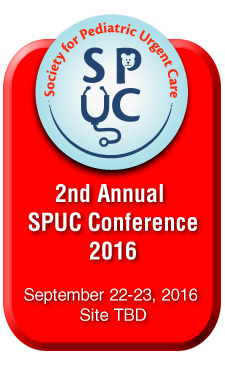Interesting Case Report: From the Annual Meeting Poster Session
Double Trouble in the Hip
Lachniet P
Cincinnati Children's Hospital, Cincinnati, OH, USA
12 y/o female presents with progressively worsening left hip pain for 5 days with no known injury or trauma. The pain worsens with ambulation and she is now walking with a limp. There is no radiation of pain. She reports some pain relief with ibuprofen. No previous history of UTIs or sexual activity. Review of systems positive for hip pain, limp, subjective fevers, HA, abdominal pain, and fatigue. Negative for anorexia, vomiting, diarrhea, dysuria, hematuria, urinary frequency, numbness, weakness, back pain, vaginal discharge or bleeding.
PMH: ADHD. No previous surgeries.
Family history: non-contributory.
Medications: Dextroamphetamine/Amphetamine
Temp 37.8° C, HR 112, RR 16, BP 124/74, BMI 17.5 kg/m2
General: alert, developmentally appropriate
Lungs: clear, normal effort
Cardiac: regular rhythm, no murmur
Abdomen: soft, nontender, no masses
Skin: warm, well perfused, no rashes, swelling, or edema
Musculoskeletal: left leg held in flexion and adduction, tender over ASIS, PSIS, and hip adductors; non-tender over greater trochanter, SI joints, and lumbar spine; pain elicited with hip IR and ER, abduction, passive extension, and resisted hip flexion; unable to bear weight in single leg stance
Neurological: normal sensation light touch
U/A: Trace protein, bacteria, and LE
CBC: WBC 17.3 (83% segs, 0 bands), HGB 8.2, PLT 679
ESR 120, CRP 19
Hip X-ray: Normal
Hip US: No hip joint effusion bilaterally
CT Abdomen/Pelvis: Duplicated left kidney with abscesses in both the upper and lower moieties. The abscess in the lower moiety extends into the perinephric space and adjacent left psoas muscle with a 1.9 x 1.5 x 7.2 cm psoas abscess
Final/Working Diagnosis:
Renal abscess with extension to psoas, psoas abscess, duplicated left kidney
Treatment:
IV Piperacillin and Tazobactam x 4 days with clinical improvement in pain, fever, and inflammatory markers. Abscess drainage was deferred due to clinical improvement. She was discharged on ciprofloxacin and clindamycin for a total of 6 weeks of antibiotics. Renal ultrasound 6 weeks after presentation showed no renal scarring and resolution of previous left renal abscess.
Discussion:
The differential diagnosis of hip pain and limp in the pediatric population is broad and must take into account etiologies from adjacent anatomic sources. Psoas abscesses in children are relatively rare and can be difficult to diagnose due to the variability in presentation and clinical overlap with other disease processes. Limp and hip pain are common presenting symptoms but patients may also present with abdominal, genitourinary, thigh, or back symptoms. In this era, Staphylococcus aureus is the most common infecting agent. Diagnosis is usually confirmed with either ultrasound or CT.
References:
- Song, John, Merv Letts, and Ron Monson. "Differentiation of psoas muscle abscess from septic arthritis of the hip in children." Clinical orthopaedics and related research 391 (2001): 258-265.
- Alonso, Carolyn D., et al. "Increasing incidence of iliopsoas abscesses with MRSA as a predominant pathogen." Journal of Infection 63.1 (2011): 1-7.

